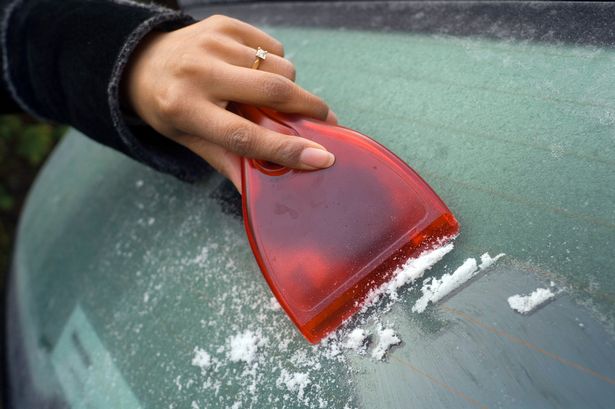The AA, a prominent UK motoring association, has issued a cautionary advisory against relying on viral online “hacks” for defrosting car windscreens, emphasizing the potential for these methods to exacerbate the issue or even cause damage. While the allure of quick fixes, particularly during the frigid winter months, is understandable, the organization stresses the importance of adhering to established, safe practices. Many of these trending methods, often shared across social media platforms, lack scientific backing and can inadvertently lead to costly repairs or compromise driver visibility, increasing the risk of accidents. The AA’s warning underscores the need for informed decision-making when dealing with common winter car care challenges.
The crux of the AA’s concern lies in the potential for seemingly harmless hacks to inflict significant damage on the windscreen. Methods involving boiling water, for example, subject the glass to a rapid and extreme temperature shift. This abrupt change can create stress fractures, especially in windscreens already weakened by existing chips or imperfections. Similarly, the use of abrasive materials, such as scrapers or even credit cards, marketed as effective ice removal tools, can scratch the glass surface. These scratches, though seemingly minor, can compromise visibility, particularly when driving towards low-hanging sun or oncoming headlights at night. Furthermore, aggressive scraping can chip the windscreen, creating further vulnerability to cracking, especially in freezing temperatures. The AA emphasizes that prevention and proper preparation, rather than quick fixes, are key to effectively managing windscreen frost.
The AA’s recommendation centers on proactive measures to prevent ice formation and the adoption of safe defrosting techniques. Covering the windscreen with a purpose-designed frost cover or even a simple blanket or cardboard can significantly reduce ice build-up, eliminating the need for potentially damaging removal methods. This preventative approach not only saves time and effort but also protects the windscreen from unnecessary stress. For those instances where ice does form, the AA advises using a de-icer spray specifically formulated for automotive use, coupled with a proper ice scraper. These de-icers are designed to melt ice rapidly without causing thermal shock, while quality ice scrapers effectively remove the softened ice without damaging the glass.
Furthermore, the AA emphasizes the importance of ensuring complete visibility before commencing any journey. Attempting to drive with only a partially cleared windscreen drastically reduces forward visibility, creating a significant safety hazard. Drivers are urged to clear not only the driver-side section of the windscreen but the entire surface, including side and rear windows, to guarantee a clear and unobstructed view of the surroundings. Additionally, the AA advises against using hot air vents to rapidly defrost the windscreen, as the sudden temperature change can, similar to boiling water, cause the glass to crack. Instead, a gradual warming of the car’s interior, combined with the use of de-icer and a scraper, is the recommended approach.
Beyond the immediate risks associated with improper defrosting techniques, the AA highlights the long-term implications of these practices. Repeated exposure to extreme temperature fluctuations or abrasive materials can weaken the windscreen, making it more susceptible to damage from everyday driving stresses like potholes or small stones. Over time, these seemingly minor damages can accumulate, leading to larger cracks that require costly repairs or even complete windscreen replacements. Furthermore, scratched windscreens can impair visibility over time, even after the ice has been cleared, potentially compromising driving safety. The AA stresses that investing in preventative measures and adopting safe defrosting techniques not only protects the windscreen in the short term but also preserves its integrity and functionality in the long run.
In conclusion, the AA’s warning serves as a crucial reminder to prioritize safety and informed practice over the allure of quick fixes promoted online. The potential for seemingly harmless hacks to cause significant and costly damage to windscreens underscores the importance of adhering to established, proven methods for dealing with winter car care. By adopting preventative measures, utilizing appropriate de-icing products and tools, and ensuring complete visibility before driving, motorists can effectively protect their windscreens and ensure safe driving conditions during the winter months. The AA’s advice emphasizes the long-term benefits of proper car care, highlighting the potential for seemingly minor damage to accumulate over time and eventually lead to costly repairs or safety risks. Ultimately, the message is clear: informed preparation and adherence to established practices are key to navigating the challenges of winter driving safely and effectively.














